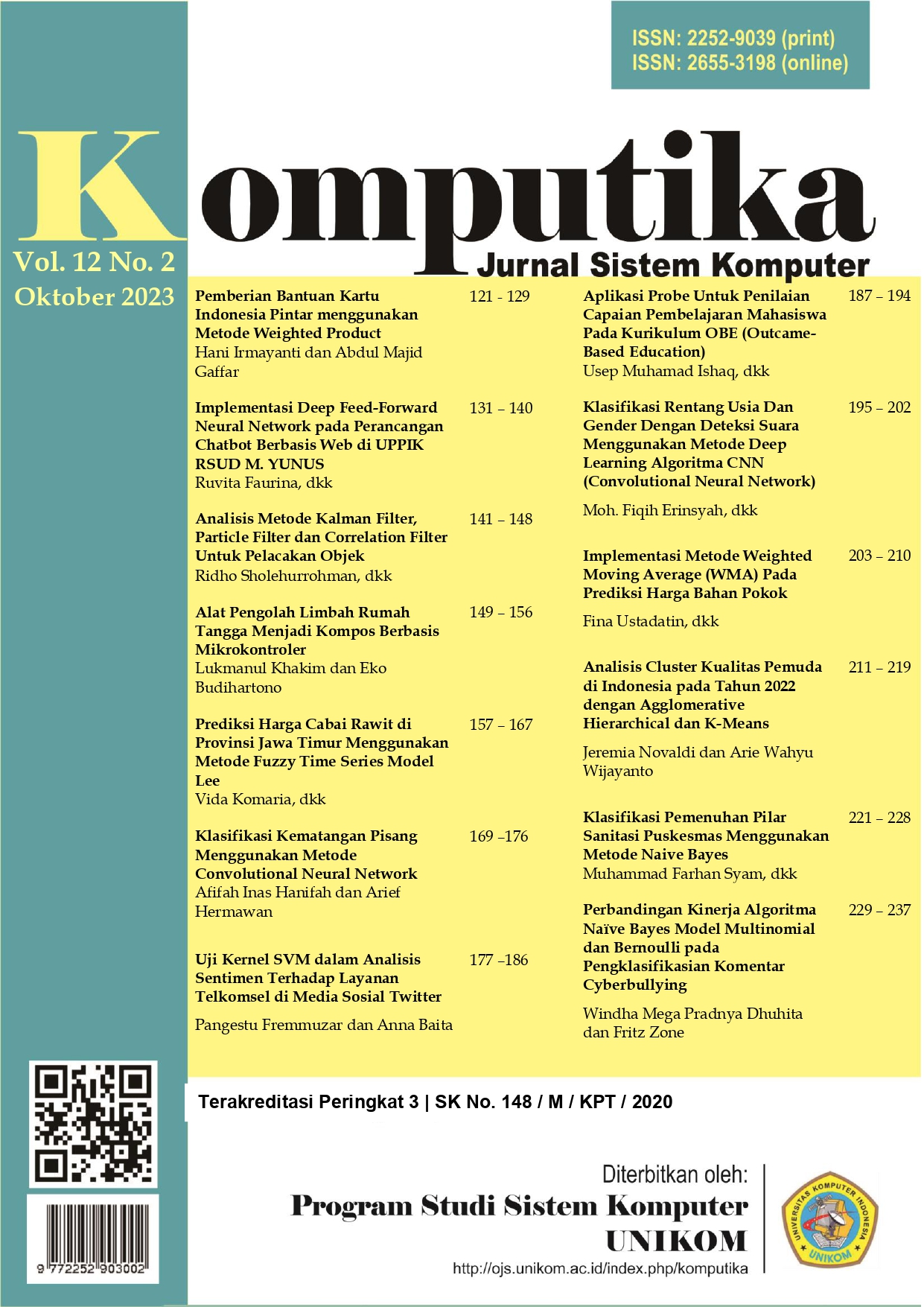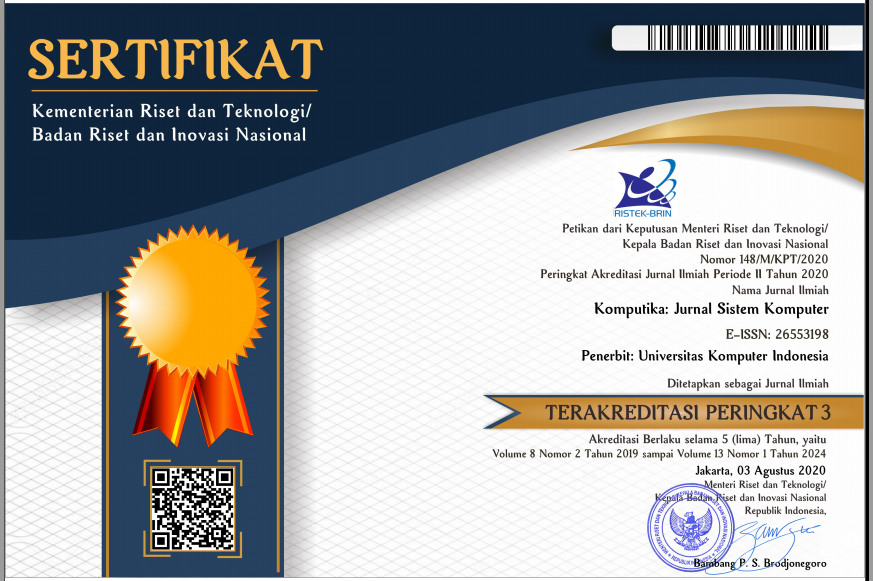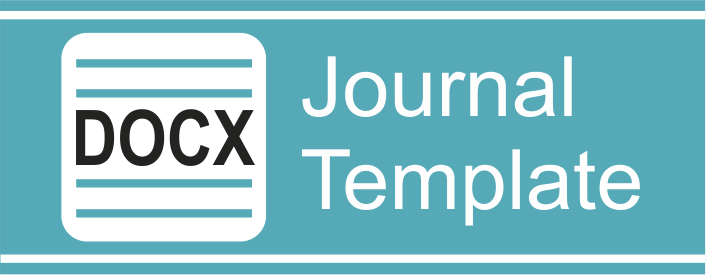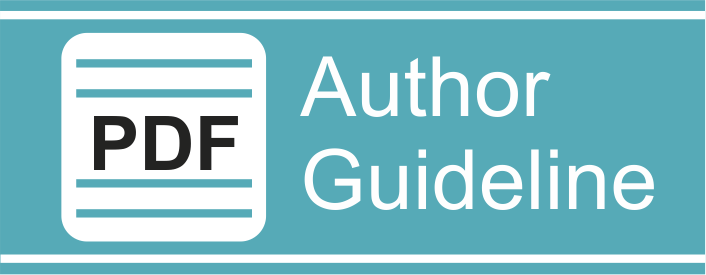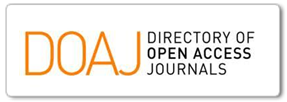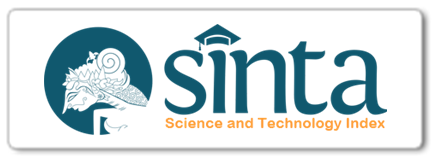Aplikasi Probe Untuk Penilaian Capaian Pembelajaran Mahasiswa Pada Kurikulum OBE (Outcame-Based Education)
DOI:
https://doi.org/10.34010/komputika.v12i2.9763Abstract
The purpose of this study was to create a web-based PROBE (OBE measurement) application that can provide information on the results of learning assessments using the OBE (outcome-based education) curriculum to students, and provide convenience to related parties in managing the OBE curriculum in the Computer Systems Study Program. OBE is a teaching approach that influences the learning process starting from curriculum design, learning outcomes, learning methods, and forms of evaluation of learning. Implementation of the OBE curriculum will not work without a system for measuring student learning outcomes. To carry out these measurements, it is necessary to design and build a student learning achievement assessment system through a software application in order to obtain ease of input, information processing, and access to the achievement of each learning outcome in CPL and CPMK. Therefore, the solution given to answer this problem is the need for an OBE application that can provide information on the results of student learning assessments. The contribution of this research is to provide convenience to related parties in viewing student learning achievements, so that it can be used for policies in terms of curriculum revision in Study Programs. The method used in this research is a case study approach where the case studies are taken from curriculum data for the 2020 Computer Systems Study Program. For making applications using the waterfall method, and analysis of functional system requirements using a structured approach. The results of this study indicate that 100% of the functionality of the application is running according to the functional requirements made, and the system has provided information on student achievement scores per academic year.
References
D. R. Anderson, L.W. Krathwohl, Kerangka Landasan untuk: Pembelajaran, Pengajaran, dan Asesmen. Terjemahan oleh Agung Prihantoro. hal, 15, 2010.
H. Wahyudi and I. A. Wibowo, “Inovasi dan Implementasi Model Pembelajaran Berorientasi Luaran (Outcome-Based Education, OBE) dan Washington Accord di Program Studi Teknik Mesin Universitas Mercu Buana,” J. Tek. Mesin, vol. 7, no. 2, p. 50, 2018, doi: 10.22441/jtm.v7i2.4214.
A. Aminuddin, R. Salambue, Y. Andriyani, and E. Mahdiyah, “Aplikasi E-OBE untuk Integrasi Komponen Kurikulum OBE (Outcome-Based Education),” JSI J. Sist. Inf., vol. 13, no. 1, pp. 2168–2182, 2021, doi: 10.36706/jsi.v13i1.13914.
S. M. S. S. Hilabi, “Jurnal Dirosah Islamiyah,” J. Dirosah Islam., vol. I, no. 1, pp. 1–18, 2019, doi: 10.17467/jdi.v4i3.1263.
R. Rabiser, K. Schmid, H. Eichelberger, M. Vierhauser, S. Guinea, and P. Grünbacher, “A domain analysis of resource and requirements monitoring: Towards a comprehensive model of the software monitoring domain,” Inf. Softw. Technol., vol. 111, pp. 86–109, 2019, doi: https://doi.org/10.1016/j.infsof.2019.03.013.
A. Cicchetti, F. Ciccozzi, and A. Pierantonio, “Multi-view approaches for software and system modelling : a systematic literature review,” Softw. Syst. Model., vol. 18, no. 6, pp. 3207–3233, 2019, doi: 10.1007/s10270-018-00713-w.
J. A. García-García, J. G. Enríquez, M. Ruiz, C. Arévalo, and A. Jiménez-Ramírez, “Software Process Simulation Modeling: Systematic literature review,” Comput. Stand. Interfaces, vol. 70, p. 103425, 2020, doi: https://doi.org/10.1016/j.csi.2020.103425.
S. M. Cheema, S. Tariq, and I. M. Pires, “A natural language interface for automatic generation of data flow diagram using web extraction techniques,” J. King Saud Univ. - Comput. Inf. Sci., no. xxxx, 2023, doi: 10.1016/j.jksuci.2023.01.006.
S. Seifermann, R. Heinrich, D. Werle, and R. Reussner, “Detecting violations of access control and information flow policies in data flow diagrams,” J. Syst. Softw., vol. 184, p. 111138, 2022, doi: 10.1016/j.jss.2021.111138.
H.-Y. Chong and A. Diamantopoulos, “Integrating advanced technologies to uphold security of payment: Data flow diagram,” Autom. Constr., vol. 114, p. 103158, 2020, doi: https://doi.org/10.1016/j.autcon.2020.103158.
H. Zhang, W. Liu, H. Xiong, and X. Dong, “Analyzing data flow diagrams by combination of formal methods and visualization techniques,” J. Vis. Lang. Comput., vol. 48, pp. 41–51, 2018, doi: https://doi.org/10.1016/j.jvlc.2018.08.001.
P. G. T. H. Kashmira and S. Sumathipala, “Generating Entity Relationship Diagram from Requirement Specification based on NLP,” in 2018 3rd International Conference on Information Technology Research (ICITR), 2018, pp. 1–4. doi: 10.1109/ICITR.2018.8736146.
C. J. F. Candel, D. S. Ruiz, and J. J. García-molina, “A unified metamodel for NoSQL and relational databases ✩,” Inf. Syst., vol. 104, no. January 2021, p. 101898, 2022, doi: 10.1016/j.is.2021.101898.
S. R. Pungus, J. Yahaya, A. Deraman, and N. H. B. Bakar, “A data modeling conceptual framework for ubiquitous computing based on context awareness,” Int. J. Electr. Comput. Eng., vol. 9, no. 6, pp. 5495–5501, 2019, doi: 10.11591/ijece.v9i6.pp5495-5501.
M. Titan et al., “ScienceDirect ScienceDirect Implementation of expert systems in potassium deficiency in cocoa Implementation of expert systems in potassium deficiency in cocoa plants using forward chaining method plants using forward chaining method,” Procedia Comput. Sci., vol. 216, no. 2022, pp. 136–143, 2023, doi: 10.1016/j.procs.2022.12.120.
A. G. Chofreh, F. A. Goni, J. J. Klemeš, M. N. Malik, and H. H. Khan, “Development of guidelines for the implementation of sustainable enterprise resource planning systems,” J. Clean. Prod., vol. 244, p. 118655, 2020, doi: https://doi.org/10.1016/j.jclepro.2019.118655.
C. Cheng, K. L. Lay, Y. F. Hsu, and Y. M. Tsai, “Can Likert scales predict choices? Testing the congruence between using Likert scale and comparative judgment on measuring attribution,” Methods Psychol., vol. 5, p. 100081, 2021, doi: 10.1016/j.metip.2021.100081.
J. K. Höhne, D. Krebs, and S.-M. Kühnel, “Measurement properties of completely and end labeled unipolar and bipolar scales in Likert-type questions on income (in)equality,” Soc. Sci. Res., vol. 97, p. 102544, 2021, doi: https://doi.org/10.1016/j.ssresearch.2021.102544.

